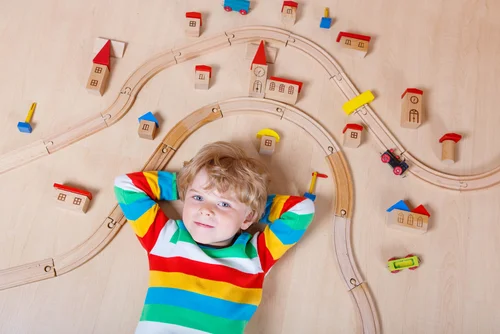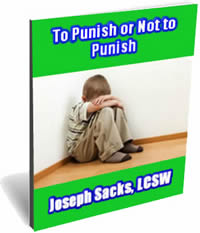Play Therapy Interventions for ADHD: How does it work?
/By Joseph Sacks, LCSW
It is remarkable how well Play Therapy interventions for ADHD work!
I have seen wonderful results with many children, and abundant research supports its effectiveness.
Play therapy operates with three main mechanisms: 1) Helping the child process distracting emotions, 2) Improving the power of decision and executive functioning, and 3) reducing impulsivity. Together with Parenting Counseling, it is doubly effective.
Children with ADHD have great difficulty focusing on tasks, paying attention and listening. They are very easily distracted and impulsive, and often disruptive. How does a child psychotherapist treat this through Play Therapy?
Resolving distracting emotions
Let's say a child is going through stress and conflict within his family. Even a small amount of conflict may generate angry feelings towards family members. Unresolved anger is one factor that intensifies ADHD symptoms. This anger simmers in the back of his mind and distracts him during his schoolwork. The whole time he may not even be consciously aware that he's angry. He doesn't have the tools to fight his distraction because he doesn't even know where it's coming from. But in the safe space of the playroom he can express and recognize his angry feelings. Let’s say he bangs with a toy hammer, punches the bob bag or pounds clay, bringing his feelings to the surface and expressing them symbolically. The therapist recognizes, identifies and reflects back those angry feelings, even if only for five minutes during each session. He has gained valuable practice in becoming consciously aware of his anger, and now he can begin to process, manipulate and resolve it and let it slip into the past so it no longer distracts him during his schoolwork. One child who went through a rough divorce was pounding clay, and after the therapist reflected back, “Oh, you're angry!” he growled, “I am angry at my father!” and pounded more. Such conscious awareness of whom he is angry with is one of the definitions of mental health.
Furthermore, Children who have been through stressors usually experience shame, and these feelings distract them. Shame is a ‘collapsing’ of the self, making a child feel that he is essentially defective, not worthwhile, no good. He becomes intensely preoccupied with his state and cannot focus on his work. However in the playroom his sense of value and self-acceptance gets built back up as follows. I show the child that every detail of every action and decision he makes in play is valuable, important and meaningful. Yet, this feeling must not be seen to exist by the therapist alone, but to the child himself. Therefore I help the child to himself conclude that his feelings and actions are worthwhile and important. This is accomplished through the amazing play therapy technique called tracking. In this technique of ‘tracking,’ which in some ways is similar to the way a sportscaster describes a game, I describe back to the child every action he takes, every decision he makes and every feeling he expresses. This gives him a perspective on himself, a way to consciously perceive every detail of each action he takes and thereby to judge himself favorably. When a child is given an opportunity to create his own entire experience, and when this experience is validated and accepted by the therapist in the interpersonal venue, self-acceptance and self-value is always the natural result. For example a child was once playing and a toy came apart. I reflected back to her each step of her attempts to fix it. This enabled her to proudly affirm, "I know how to fix things." Such self-realization is indeed the creation of true self-esteem. I demonstrate so much acceptance of the child's actions in play that she learns to accept herself and conclude, “I am OK.” In addition the toys are carefully selected to include items that children of her age can easily and successfully manipulate. As successful experiences are validated and reflected back to him by the therapist, he learns to think "I can accomplish things." All this builds up over time with weekly sessions and challenges and overcomes his feelings and thoughts of shame so that they no longer distract him in the classroom.
In addition fear often distracts children. Children are small and weak compared with adults, and they often may feel vulnerable, powerless and dependent. This generates fear that their needs will not be met. A child with ADHD is already distracted, but this emotion of fear preoccupies his mind and further distracts him. It simmers in the back of his mind and competes with the teacher for his attention. However playing out his fears in pretend scenes in the playroom, while the therapist recognizes, verbalizes and reflects his fears allows him to process them and gain mastery over them. Thus his fears don't seem so intimidating and they don't distract him to such a great extent.
For more information on how Play Therapy helps children to release repressed emotions, click here.
Improving the power of decision
Children with ADHD have difficulty with what is called “executive functioning.” They have problems mustering the decision-making power to stay focused in the face of their strong distractions. Play Therapy operates to remedy these difficulties in the therapist’s playroom. There, the child makes all of his or her own decisions, while that decision making process is intensely supported and validated by the therapist. I reflect back to the child every little decision he makes. Making a decision, however small, is an accomplishment for him, and my reflection back gives the child a conscious awareness of all of those accomplishments. This gives him a great sense of achievement and pleasure in his decision-making, thus encouraging him to make more decisions. Through practice his power to make decisions is increased and now he has a greater ability to choose or to ‘decide’ to focus in the classroom.
Reducing impulsivity
Moreover, children with ADHD are often very impulsive. They have a low tolerance for restrictions and they act out impulsively and inappropriately. Play therapy increases their ability to tolerate restrictions in the playroom where the therapist gives them complete control of the action. While doing so, I follow and verbally note the actions he takes. This gives the child an exhilarating sense of control and self-determination. He or she is thrilled to be in the driver’s seat. A weekly session gives the child an official time where he is in control. It is as if he is the boss of an entire official institution - his weekly session with the therapist. This is immensely empowering to him, and he feels so liberated that he now has the strength to tolerate the usual restrictions experienced outside of the session. Thus he no longer has the need to act out so impulsively. Eventually, this empowerment becomes a part of him.
To find out how Play Therapy reduces tantrums, click here.
Children with ADHD often have other overlapping issues, including anxiety, depression, oppositional defiant behavior, and more. As I have explained elsewhere, Play Therapy helps to resolve those issues as well and reduces the overall number of challenges the child is facing. Together with Parenting Counseling, Play Therapy is especially effective at treating ADHD.
To find our how Parenting Counseling helps reduce ADHD symptoms, click here.
Feel free to peruse the rest of my interesting blog, the specialties on my website, or download one of my informative free reports.
To find out in detail more about how Play Therapy works, click here.
If your would like to know more about Play Therapy interventions for ADHD,
or would like guidance or treatment from a child psychotherapist in lower Manhattan, you may call me at 646-681-1707 for a free 15-minute consultation. I look forward to speaking with you!






























